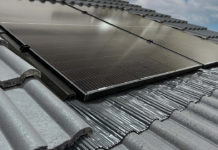
In the landscape of real estate and construction, businesses continually seek avenues to enhance efficiency and environmental credentials. One such approach is the use of modular building systems, reported to offer significant advantages over traditional methods. These systems are hailed for their perceived greener footprint, the generation of less waste, and their rapid construction pace, which allows for simultaneous site work.
Yet, recent years have witnessed notable setbacks in modular construction, with reports of structural integrity issues and unusable buildings. This calls for stakeholders—investors, owners, and occupants—to scrutinise how modular buildings fare in adverse events like fires or water leaks, and how to restore them post-loss. Beyond mere regulatory compliance, robust property protection principles must be integrated into the design, construction, and operation of these facilities to ensure a secure and sustainable future.
Understanding Modular Construction
Modular construction entails off-site fabrication of building components or modules, which are then transported and assembled on-site. These modules, ranging from complete rooms to segments of corridors, are stacked to form the final structure in a three-dimensional configuration.
Recent Setbacks
Instances such as a hotel fire resulting in complete loss in July 2020, or a mass evacuation due to safety issues in a modular development in October 2020, underscore the challenges faced. Such incidents necessitate a comprehensive understanding of property risks associated with modular construction.
Property Risk Analysis
Property protection and insurance provision demand a detailed assessment of a building’s performance under various stressors, extending beyond evacuation procedures to include fire suppression and restoration strategies.
Modular construction’s characteristic three-dimensional matrix has the potential to facilitate fire and smoke spread through concealed cavities, posing challenges for firefighting efforts. Additionally, exposure to water events can compromise structural integrity and aesthetics, amplifying financial losses.
Mitigating Risk
To address these challenges, stakeholders must collaborate with brokers and insurers to identify, assess, and manage property risks effectively. Beyond regulatory compliance, measures such as employing non-combustible materials, ensuring effective compartmentation, and installing sprinkler systems can bolster property resilience.
Resources such as technical questionnaires and essential principles developed by industry bodies aid in evaluating modular construction projects. Learning from past experiences and incorporating best practices is imperative to mitigate risks and ensure the viability of modular buildings.
Piece by: Mark Middleton, Risk Management Executive, Lockton Risk Control

















